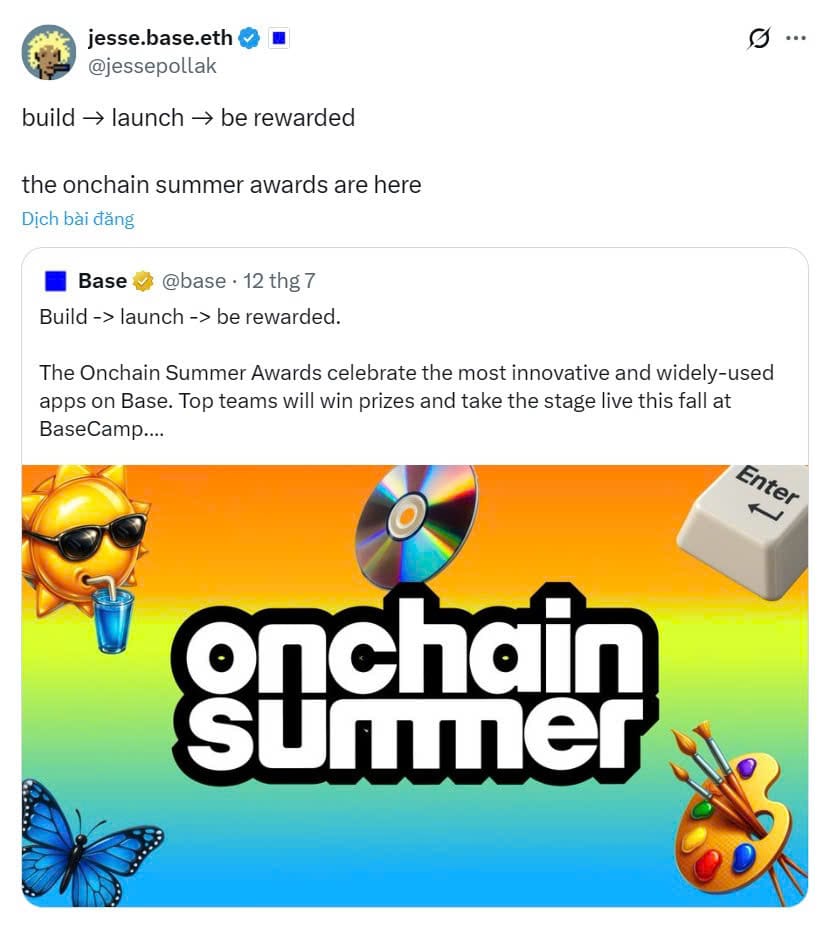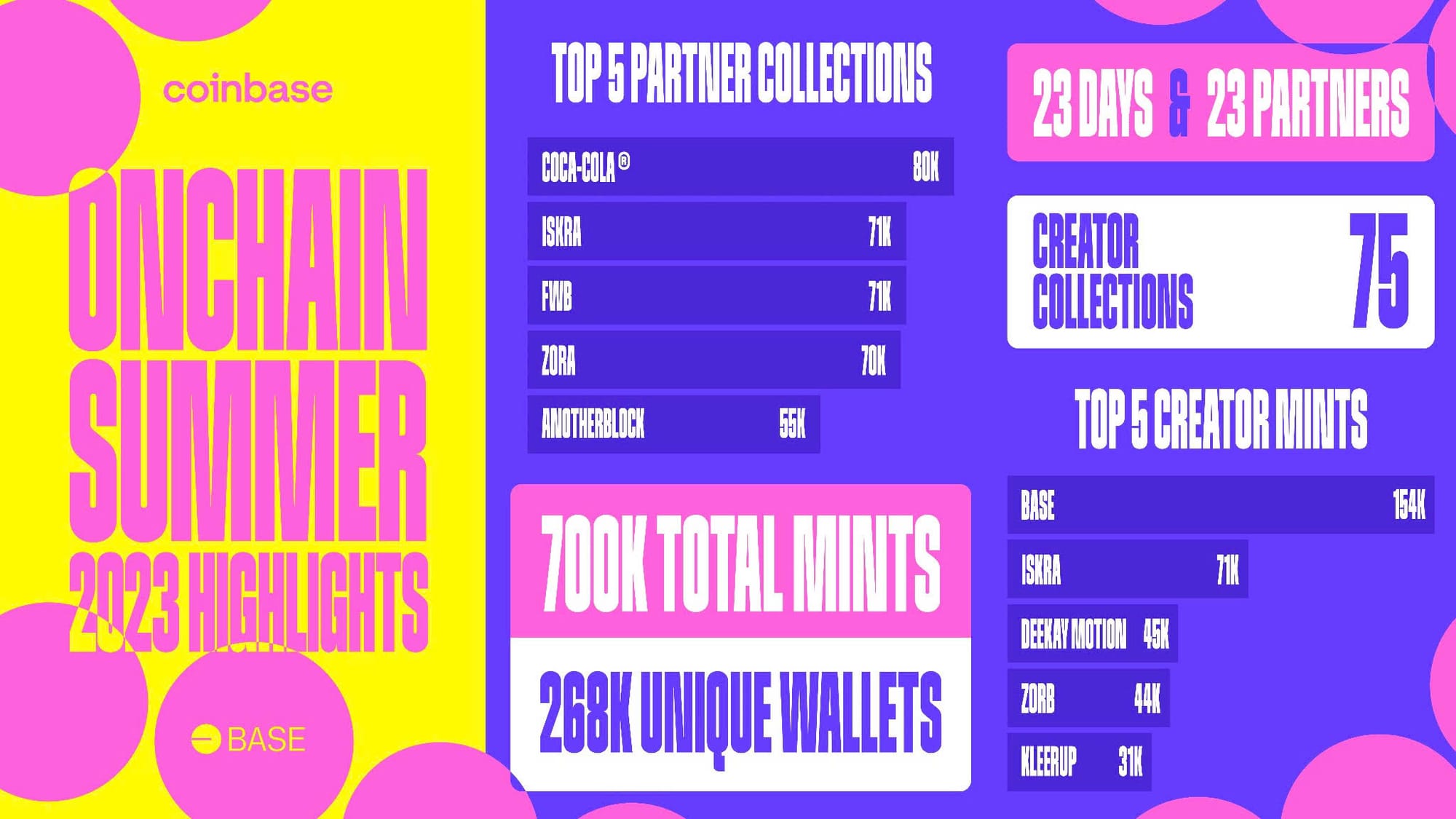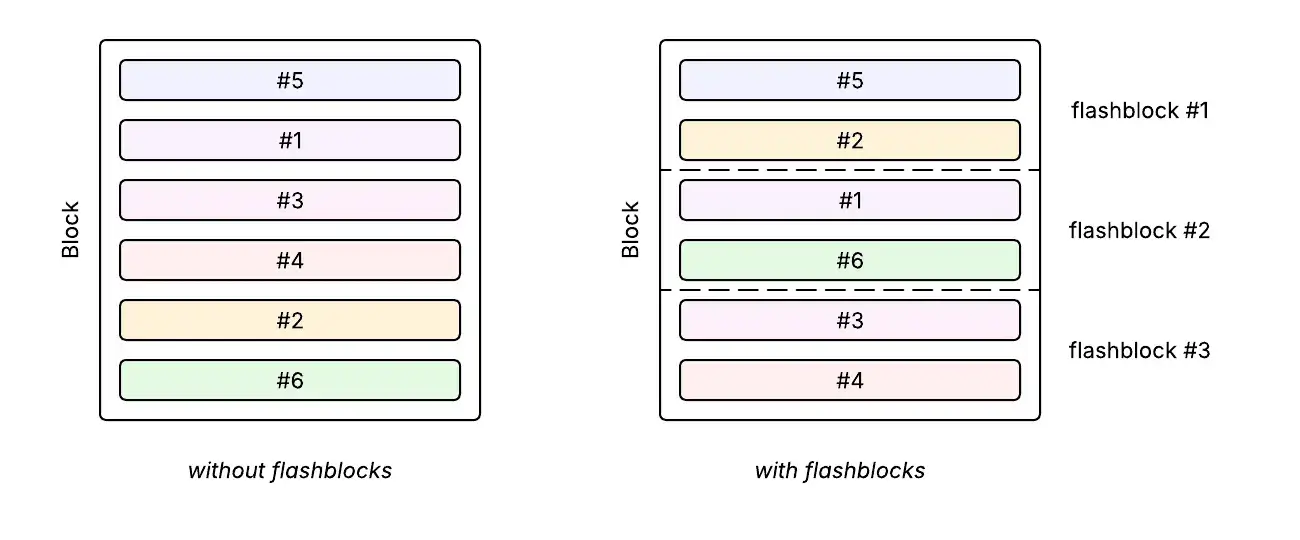Base 2025: How a Coinbase Layer-2 Reached $1 Billion TVL in 7 Months (Part 2)
Phoebe Duong
Author

After the explosive growth phase, every blockchain project faces a familiar challenge: how to sustain momentum once the hype fades? For Base, the Layer-2 network built by Coinbase, that challenge came sooner than expected. Just weeks after its mainnet launch, Base’s TVL dropped more than 30%, memecoin scams flooded the ecosystem, and users began leaving in large numbers. What seemed like a guaranteed Coinbase success story was suddenly at risk of becoming a textbook case of “early success, short-lived.”
Instead of relying on marketing gimmicks or airdrop campaigns, the Base team chose a different path. They faced the downturn with real data, product iteration, and onchain user insights. The team redesigned the entire user journey, redefined their go-to-market strategy, and launched campaigns that caught the attention of the entire Web3 marketing industry.
If you are interested in learning what Base is, why it was created, and the inherent advantages that helped it achieve such rapid growth, check out Base Blockchain - Coinbase’s Layer-2: Advantages, Strategy, and Growth Lessons (Part 1)
In this part, we start from the moment it seemed like Base had run out of magic. Instead of trying to extend the hype, the Base team decided to rebuild from the ground up with Onchain Summer, a campaign that has since become a classic case study in Web3 growth marketing.
These are real-world marketing lessons that any builder or Web3 startup can apply to their own project, answering key questions such as:
- How can a project regain growth momentum once the hype is gone?
- How do you design an onchain campaign that is both engaging and valuable to the ecosystem?
- What made Onchain Summer the perfect example of how Web3 projects rebuild trust and sustain long-term adoption?
Onchain Summer: How Base Turned a Launch Into a Global Onchain Movement

Campaign Overview
If the early phase of Base was the “survival test,” Onchain Summer was the turning point that brought the project back to life. On August 9, 2023, when Base mainnet officially opened to the public, Jesse Pollak and his team didn’t follow the typical launch playbook of “bridge tokens and farm yields.” Instead, they created a true onchain summer - a cross-industry campaign blending art, music, gaming, and real-world experiences.
For three weeks, users could mint daily NFTs, watch “Onchain Stories” livestreams, and join IRL events in Miami, San Francisco, and Chicago. More than 50 brands joined the campaign, including Coca-Cola, Atari, Zora, OpenSea, FWB, Parallel, and Blackbird.
The Base marketing strategy wasn’t just about launching a new blockchain; it was about creating a culture. Billboards appeared across major cities, NFT mints flooded social feeds, and the hashtag #OnchainSummer spread rapidly throughout the Web3 builder community.
Results
Within weeks, Base recorded 268,000 active wallets, over 700,000 NFTs minted, $242 million bridged, and more than 130,000 daily active users. TVL surged past $400 million, cementing Base’s position as a top-tier Layer-2 network just one month after launch.
More importantly, users didn’t just “try it out” - they stayed to build. When Coca-Cola launched its “Masterpiece NFT” collection on Base, traffic to its minting app increased 20x within 24 hours, proving that this was more than just a marketing stunt. Onchain Summer successfully turned engagement into sustained onchain behavior.
If you’ve ever wondered how a Layer-2 blockchain can launch in a way that not only attracts TVL but also keeps users and developers engaged long term, the answer is simple: create something people want to be part of.

Lessons for Builders
1. A “Launch” Isn’t a Day - It’s a Season
Base didn’t treat mainnet day as the finish line, but as the beginning of a continuous story. The three-week Onchain Summer campaign acted as an extended testing ground for messaging, features, and narrative.
If you’re building an app or protocol, don’t aim for a one-day “big bang.” Break your launch into three to four themed weeks to build sustained interest:
- Week 1: Share your vision and open the invite list.
- Week 2: Launch a testnet or limited mint experience.
- Week 3: Highlight early user stories.
- Week 4: Recap and open the builder community.
This “seasonal storytelling” keeps organic attention alive instead of burning all visibility on day one.
2. The Best Marketing Happens When Users Tell the Story Themselves
Base didn’t buy ads. It gave users tools to mint, remix, and share their creations, turning each social post into a free media slot. For smaller builders, you can do the same by designing shareable onchain experiences:
- Create NFTs or badges that users are proud to showcase.
- Let them personalize it (name, color, design) to increase ownership.
- Encourage sharing with a project hashtag.
A fun, easy-to-show mint spreads faster than a hundred paid ads.
3. Don’t Wait for Big Brands - Build Small Momentum First
Coinbase gave Base brand trust, but Onchain Summer gave it traction and survival. You may not have Coca-Cola in your campaign, but you can still create your own “summer.” If you’re building a social app, pick a time or theme such as “NFT Week” or “Community Friday” and focus your energy for 2–3 weeks. Small, consistent momentum is how you hack early trust without a massive budget.
4. Tell a Story People Want to Repeat
Base chose summer - bright, emotional, and easy to join. What will yours be? It could be Hack Season, Retro Drop Month, or Art Week. What matters is that your narrative makes people want to be part of it and share it.
Builder Grants Waves: A Retroactive Funding System That Helped Base Survive After the Hype

Overview
At the end of 2023, as the Onchain Summer hype began to fade, Base faced its first real challenge. TVL dropped over 30% in just two weeks, and numerous scam or rug-pull dApps eroded community trust. In this context, Jesse Pollak did not choose to pump liquidity or airdrop tokens like most other L2s. Instead, Base took a different path: directly funding builders who were actually shipping products.
The Builder Grants program emerged from this philosophy. It was not an investment fund - Base took no equity, did not require pitch decks, and did not ask founders to “pitch well.” ETH was granted directly to builders who had on-chain proof of work: a deployed contract, a few dozen active users, or even a Dune dashboard showing the product in action.
From Wave 1 to Wave 10 (2023–2025), Base allocated over $10 million USD to 100+ projects, with flexible grants: from 1–5 ETH for prototypes to $100,000 for projects with real traction. This was Base’s way of recycling TVL into creative energy, turning funding back to the builders creating real on-chain value.
By mid-2025:
- 50+ AI projects were actively running on Base.
- 30% of grantees launched their own mini-grants, creating a “builder funds builder” effect.
- Base became one of the few Layer-2 networks to survive the 2023–2024 hype cycle, instead of being forgotten like Blast or zkSync.
Lessons for Builders
1. Funding is not just “raising money”, it is about creating a loop that sustains the ecosystem
Base’s retroactive grants created a simple, effective model: Ship first → measure on-chain → receive rewards → ship more. Small builders can adopt the same mindset without millions in funding. Even allocating 5–10% of revenue or token supply to reward real contributors can keep your ecosystem alive and growing.
2. Ship first, talk later
Base did not require pitch decks or 20-page proposals, only real on-chain links. For small teams, this is a critical mindset: spend time shipping MVPs instead of writing proposals. With a live product, funding, publicity, and users come much easier.
3. Focus by wave - avoid scattered efforts
Each wave targeted 1-2 themes, aligning different builders in a short period. Small teams can do the same: organize a “builder month” around themes like “DeFi Week” or “AI Sprint”. Clear themes make it easier for builders to start working rather than hearing “build whatever you want.”
4. Make grant selection transparent and community-driven
Base had no secret committees. All nominations came from the community, and results were published on Mirror and Basescan. Small teams can apply the same principle - let users or contributors vote for grant recipients. Transparency reduces drama and builds trust among builders.
5. Feedback loops are oxygen for the ecosystem
Base ran quarterly AMAs and post-mortems to gather feedback from grantees. This allowed them to identify bottlenecks, provide gas credits, or open additional bounties for open-source work. For small grants or dev communities, remember: giving rewards is only the first step - the feedback loop keeps the ecosystem alive.
Flashblocks: How Base Turned Speed Into a Go-To-Market Strategy

Overview
By early 2025, Base had emerged from its “hype chain” phase. TVL was stable, builders were staying, but growth had begun to slow. In internal meetings, Jesse Pollak emphasized a seemingly simple idea
"If Web3 is going to move forward, its experience must be as fast as Web2"
From this principle, Flashblocks was born, a technical leap that also redefined how people perceive blockchain speed and UX
Block times were reduced to 200ms, not to boast benchmarks, but to remove a psychological barrier: the notion that onchain means slow
In a world where everything, from transactions to messaging to payments, happens in milliseconds, any delay not only frustrates users but can kill an idea before it is tested
- Builders waiting 5–10 seconds per transaction lose their creative rhythm
- Users waiting minutes for results lose faith that blockchain is the future
Base solved this by optimizing code and making speed part of the brand experience
The launch campaign started with a 15-second video "Blink of an Eye"
Transactions confirmed in the blink of an eye symbolized Web2-level speed, but fully onchain. The clip went viral, reaching over 10 million views, letting users experience speed firsthand. Base did not have to claim it was fast, people saw it themselves
Results
From the Flashblocks testnet at ETHDenver (Q2 2025) to mainnet launch (July 2025)
- Transaction times reduced 5x
- Average throughput increased 3x, especially for mini-apps and agent automation
- Over 50 AI projects and real-time apps migrated from other chains to Base to leverage pre-confirmation capabilities
- TVL reached 10 billion USD, marking Base’s maturity, no longer just “Coinbase’s Layer-2,” but real-time Web3 infrastructure
The greatest success was not the numbers Flashblocks gave builders the feeling they were building on a living, fast ecosystem The Speed Hackathon catalyzed over 100 dApps to optimize under 1 second. From games to social mini-apps to AI agents, all were designed with the new mindset: "Onchain doesn’t have to wait"
Base not only created speed, it created a culture of speed
Lessons for Builders
1. Speed is not just a feature, it shapes user emotion
In Web2, speed is assumed. In Web3, solving this problem first defines the experience. Ask yourself, what makes my users wait and start there
2. Speed creates the most shareable narrative
People do not need technical knowledge to perceive “fast”. When a chain or app delivers immediate results, users naturally share it. Small builders can apply the same principle: build experiences users can feel instantly
3. Web3 is moving closer to Web2 than ever
The next wave of successful Web3 apps may feel identical to Web2 apps, except the backend runs onchain. To convert Web2 users, UX must be comparable or smoother. Flashblocks proves that users do not care about being onchain, they just want it to work
4. Builder marketing does not need to be complicated, enable showcases
The Speed Hackathon is a prime example, builders learned and showcased live products simultaneously. Founders can replicate this by providing platforms for builders to demonstrate, not just present
5. Technology can be a story if you know how to tell it
Base did not sell “200ms block time”. They sold the feeling, "from click to confirmed in the time it takes to think". That is a story the entire Web3 community can understand
Questions to ask yourself as a builder
From the outside, Base may seem “favored”: backed by Coinbase, well-funded, and with a strong team. Base had a rocket ship, but without knowing how to fly it, they could still crash like any other startup. What helped them survive was a builder-first mindset, something you can adopt even if you are building a small project.
Should I wait for a strong brand before shipping?
Base almost lost momentum despite the Coinbase brand. They pivoted by shipping MVPs quickly to generate onchain signals. Even without millions in funding, you can make an impact with real products.
How can I use hype effectively?
Base leveraged peak attention to attract liquidity and then reinvested it to fund builders. You can apply this on a smaller scale: use revenue to reward contributors or create bounties for those helping your project.
Is my community just followers?
Base did not run ads to get users. They let builders do the marketing through hackathons, grants, and memes. With a small team, paying the right contributors can create a real community that spreads your product for you.
Am I measuring like an engineer?
Base did not rely on gut feeling. They tracked data, monitored TVL drops, and fixed issues immediately. Data is the guiding compass. Whether you use Dune, Nansen, or Google Sheets, the key is knowing where you are and whether you are moving forward or backward.
Key Takeaways
- Base reached $1 Billion TVL in just seven months by shifting from hype-driven launch to real product and ecosystem engagement.
- The “Onchain Summer” campaign showed that Layer-2 success comes from culture and participation, not just liquidity guns.
- Builder-oriented grants (retroactive, execution-first) helped Base turn momentum into real on-chain value by funding builders who shipped.
- Technical innovation like Flashblocks (200 ms block preview) transformed user perception of speed and made Web3 feel like Web2.
- Growth is not guaranteed by backing alone - Base’s pivot illustrates that even well-funded chains must prove value, build trust, and deliver experience.
- Builders should focus on: launching in seasons (not one-day events), enabling users to tell the story, funding execution over proposals, and making speed part of brand experience.
Conclusion
Base did not succeed because they had more money than anyone else. They succeeded because they understood what many builders forget: Web3 rewards those who ship, not those who just talk.
And if Base, with all its advantages, still had to learn how to “fly again from scratch,” then for the rest of us there is only one path: build faster, learn faster, and ship real products.
Next, let’s dive into How Privy’s Marketing Hacks Scaled a Web3 Product to 1000+ Team, and extract actionable insights for your own Web3 project.
Our community
If you’re building your own Web3 SDK, wallet infrastructure, or just trying to make onboarding less painful, join Fystack's Telegram group. It’s where developers and founders swap lessons, share benchmarks, and discuss real strategies to grow Web3 products that actually scale.



